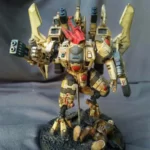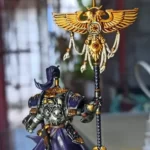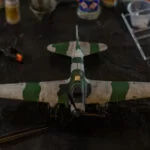Are Vallejo metallic paints good? | +Examples and Tips
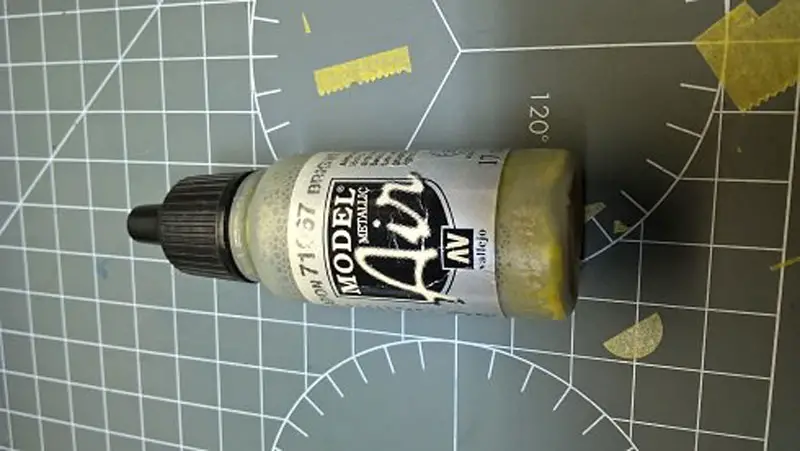
Vallejo has a metal color range made from real aluminum pigments and acrylic mediums. However, the fact that they are termed “metal” means many hobbyists confuse them for their metallics, but they differ significantly.
The metallic paints don’t really have metal pigments since they are not designed with aluminum filings. Instead, they are made up of mica crystals that look like metal flakes.
Regardless of the differences, the simple question is, are Vallejo metallic paints good?
Should you use Vallejo metallics for your miniatures
If you want a slight shine on your miniatures, Vallejo metallic paints are a must-have. They also work great on an airbrush with a little thin and offer great coverage.
The only drawback to using Vallejo’s metallic paints is that they are gloopy and somewhat trickier to maneuver around the surfaces of your model to get an even coat. On the other hand, they are extremely transparent when you thin them down enough to be usable.
What metallic colors does Vallejo have?
Unlike Vallejo’s metal color line, Vallejo’s metallic colors are grouped into model air metallics, model color, and game color metallics.
These metallic colors come in 17ml plastic dropper bottles and work well for painting models and miniatures. However, they are different from regular Vallejo paints.
The game color and model color metallics are incredibly thick and heavy and need thinning to look great. Still, you need to be wary because you will only need a small amount of water to get these paints to their optimum consistency.
On the other hand, the model air metallics are quite thin and won’t require excessive thinning since they are designed for airbrushing. Hence, they only need the tiniest amount of water to flow well.
For example, if you use the same amount of water to thin down two metallic paints like the Glorious Gold and Chainmail Silver, the Chainmail silver will drink up the water and thin well. On the other hand, the Glorious Gold became excessively runny, making painting your miniatures a chore.
How is it to use Vallejo metallic colors?
Vallejo metallic paints won’t work the same as the metal color range.
In fact, the metallics differ from Vallejo metals in terms of coverage, flow, consistency, dry time, pigments, reflectiveness, durability, and how they are thinned.
- Coverage
I like paints where I can just easily apply a solid block of color, as thin as possible, with as few coats as possible.
Metallic paints have decent coverage. However, you may have to apply them in multiple coats to get desired effects, especially with the silver if you thin Vallejo metallics. Besides this, Vallejo metallics are thick and applied wrongly, which can conceal the surface details of the model.
- Flow
If you’ve used the Vallejo Model Air metallics, you know that their main composition is mica metal flakes, unlike the finely ground aluminum pigments of Vallejo metal colors.
Mica flakes are often large and often make coverage quite tasking. For this reason, Vallejo metallics won’t flow well and mix better.
- Dry time
The biggest advantage of metallic paints is that they dry fast because they are alcohol-based. This means you can paint your model fast without worrying about spending so much time on one model.
On the other hand, the fast-dry time means it will be easy for imperfections to remain on the model.
- Consistency
Consistency defines how well or predictably a paint behaves at any given time. Simply put, it is the quality control of the paint. Vallejo paints are known for their consistent, smooth results. However, the metallics sometimes appear clumped and sticky. But, this may only happen when you store them wrongly (in a place with too cold temperatures).
- Thinning (only if needed)
Another pro of Vallejo metallic paints is that you can use them without thinning. Vallejo paints need thinning before use, but their metallics don’t thin well. To remedy this, most people use a thinning medium.
What you should know is that adding medium is only going to render metallics useless. Metallics are fairly transparent. So, it requires multiple coats to get good coverage. Adding a thinning medium to it means putting more binder to what is clearly already too much paint and may distort the small details on your model.
Only water down metallics if the situation calls for it.
- Pigments
Vallejo’s metallic paints, especially the gold, have very large pigments that they should. These large pigments means when applied to the model, you notice more gaps between the pigments in a thin layer. Hence, you won’t get smooth results as expected but father a finish that looks like glued glitters.
The biggest drawback of these large pigments is that it affects the reflective effects of the metallic paint.
- Reflectiveness
Metallic paints are defined by the brightening highlights they offer when angled toward a light source.
When you paint Vallejo metallics, even shadowed areas bounce a little light thanks to the metal-like mica flakes in the paint. On the other hand, Vallejo metallic paints have a slight matt finish which means they won’t offer a spectacular highlight like the metal color range. Hence, the entire surface painted with metallic will look slightly flat.
- Will they last for long?
Longevity is probably one of the strongest points of Vallejo’s metallic paints. The extra coats of metallic paint often added to get good coverage means it will be more resistant to chipping, sun fading, and scratches.
What metallic colors from Vallejo are the best, and which are the worst
When it involves the best and worst color line, Game Colour and Model Colour metallics are inconsistent – with the model range being better than the fame color metallics.
On the other hand, the Model Air metallics are great, especially their gold and silver. In Vallejo’s game range, I’ve found their greens, yellows, and oranges to be way too thin and with poor coverage.
The model range, while not having the same colors and sometimes inconsistent, is more matt and seems better in coverage than the game color.
What are Vallejo metallics best for?
Vallejo’s metallic color serves different edge-highlighting purposes or mid-tones.
You can use them on your Warhammer models, Necrons, military vehicles, airplane models, and metal miniatures.
What is the right way to use Vallejo metallics for the best results
You already know that Vallejo metallics are thick and are designed with mica crystals, which means getting a smooth finish will take effort when thinned.
The good news is that it is easy to use Vallejo metallics with the right steps. Just do the following:
- Shake the bottle, so the mica crystals mix well with the medium
- Pour a small amount into a cup, and screw the paint lid tight. This way, it does not dry fast and add isopropyl alcohol to paint in the cup to slow the drying time. Then, mix.
- Paint in thin layers to save details
- Always varnish the paint to keep it long-lasting.
Are Vallejo metallics the best for miniatures? How is it compared to other brands?
Vallejo’s metallic colors are good for miniatures but not as great compared to brands like Scale75. They do, however, behave almost the same as Citadel metallics.
I have used both Vallejo gold and silver metallics and would recommend them for large miniatures. However, make sure to thin them a bit.
Like Citadel metallics, Vallejo’s metallic colors are thick thanks to the large mica crystals in them. When applied, the large flakes make the result look less like a smooth metallic finish and more like you glued glitter on the kit. However, you get smooth results by thinning it a little bit with water.
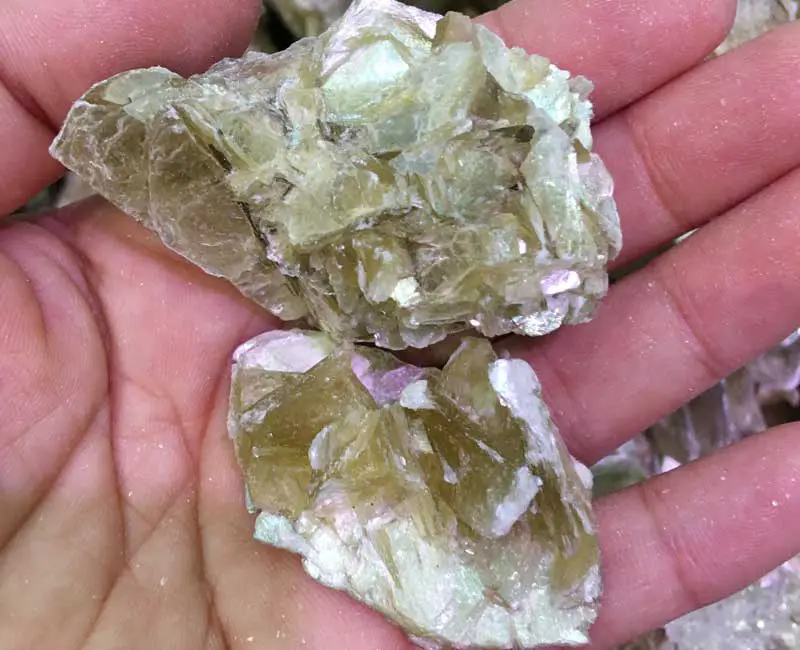

What are the differences between Vallejo metallic and Vallejo metal colors? Are both good for miniatures?
Vallejo metallic and metal colors are good metallic paints for painting military vehicles, Warhammer models, and airplane kits. However, the metal color range offers more benefits when painting miniatures.
The Vallejo Metal Colour range is fantastic, with runny consistency perfect for airbrush and paint brushing and with quite fine aluminum metal pigments to offer good coverage.
However, the large bottles cost higher than regular Vallejo metallic paints. They are a great choice for steels and silvers and offer better consistency and reflectiveness.
On the other hand, the mica crystal flakes of metal in the metallic paints make the paint appear shiny and glittery. Metallics dries flat, and the shine is 100% more cohesive. But, they are cheaper than the high-quality metal color range.
Differences between Vallejo metallic colors and metal paints
| Vallejo Metallic Color | Vallejo Metal Color | |
| Pigment | Dense | Runny |
| Metal Fills | Mica crystals | Aluminum |
| Based | Alcohol | Water |
| Price | $ | $$ |
| Consistency | Hit or miss | Perfect |
| Results | Looks like glued glitter | Realistic metal finish |
| Thinning | Required | Not required except during transitions |
Conclusion
If you paint scale models or miniatures, you will need to work with metallic paints at some point. Vallejo metallic paints won’t offer the same coverage, consistency, pigmentation, reflectiveness, and durability as the metal color range, but they are worth investing in, especially for small-scale projects. They make your model look almost like the real thing.

